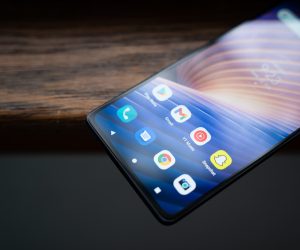
Why does this happen? Well, Li-ion batteries contain a thin sheet of lithium and a thin sheet of oxygen. When dropping a phone, important components like the display will usually break before the battery takes any damage. Unless you’re taking apart your phone or breaking it for fun, this isn’t an issue that you need to worry about. When a Li-ion battery is physically damaged, it can short circuit, build up gases, or burst into flames on the spot. You can buy a charger straight from your phone’s manufacturer, check the Amazon reviews for a charger before you buy it, or do a Google search for your phone’s name with the words “best chargers.” If you have an Apple device, you should also look out for MFi-certified chargers, and if you’re buying a wireless charger, look for a Qi-certified device. Phones have built-in voltage limiters that prevent overcharging or charging that’s “too fast” for the battery to handle.įinding the right charger for your phone is surprisingly easy. Casezy Idea/Shutterstockīut don’t worry, a cheap charger won’t “overcharge” your phone (although that would undoubtedly cause an explosion). Again, this kind of slow-forming mechanical damage will almost always break your phone before it can burst into flames. Usually, this damage happens over a long period, and it leads to “bubbles” or shorts in your phone’s battery. An old or cheap micro-USB cable will work with newer phones, and a brand new super fast charger will work with old devices. But you should probably stick with reliable chargers from good companies, or chargers that are certified by your phone’s manufacturer.Ĭheap or uncertified chargers (especially crappy wireless chargers) can generate excess heat and damage a phone’s battery. Generally speaking, any charger will work with any device. Use Reliable or Certified Charging Devices Just keep in mind that those safety features usually lead to the death of your phone. Plus, phones and Li-ion batteries have built-in safety features that prevent slow-forming mechanical issues from getting out of hand. And while permanent shorts and pressure buildup can lead to thermal runaway, these slow forms of mechanical deterioration usually cause a battery to break before it has the chance to explode. That said, your phone probably won’t explode after being left in a hot car for a day. That’s why most phones will stop the charging process or shut down if they get too hot. Naturally, this process can accelerate if a Li-ion is charging while at a high external temperature. These gases can cause the battery to inflate like a balloon, which creates pressure (energy that can cause an explosion) or compromise the battery’s structure. They may not enter an exothermic breakdown, but they can permanently short, deteriorate, or (oddly enough) produce gases like oxygen and carbon dioxide. When a Li-ion battery discharges at a high temperature (sitting outside or in a car), its cells can become a bit unstable.

You’re probably also aware that too much heat can ruin a battery, along with other components in a car. If you live in a snowy area, you’re probably aware that car batteries work best when they’re a little warm-say, 80 degrees Fahrenheit. RELATED: What to Do When Your Phone or Laptop Has a Swollen Battery Don’t Leave Your Phone in the Car If your phone or another device has a swollen battery, however, you’ll want to do something about that right now. Now that we understand the process of thermal runaway, it’s a lot easier to pinpoint how, when, and why phones (among other Li-ion devices) explode. Depending on the speed of this process, a battery could quietly sizzle out, catch fire, or create a minor explosion. This kicks off the process of thermal runaway, which is essentially a positive feedback loop (like when you put a microphone next to a speaker). Once a cell enters exothermic breakdown and releases heat, its neighboring cells are destined to hit their own critical temperatures.

Basically, the cell itself starts to release a ton of heat. When the critical temperature of a cell is reached (due to external heat, overcharging, damage, or poor manufacturing), it enters an exothermic breakdown. Each of these cells has a critical temperature-think of it as a boiling point. Lithium-ion batteries contain a ton of Li-ion cells.


Blu r1 hd battery explodes free#
This process can be a bit difficult to understand, so we’ll keep things short, sweet, and free of dense scientific jargon. Whenever a Li-ion battery explodes or catches fire, it’s undergoing a process called thermal runaway.


 0 kommentar(er)
0 kommentar(er)
